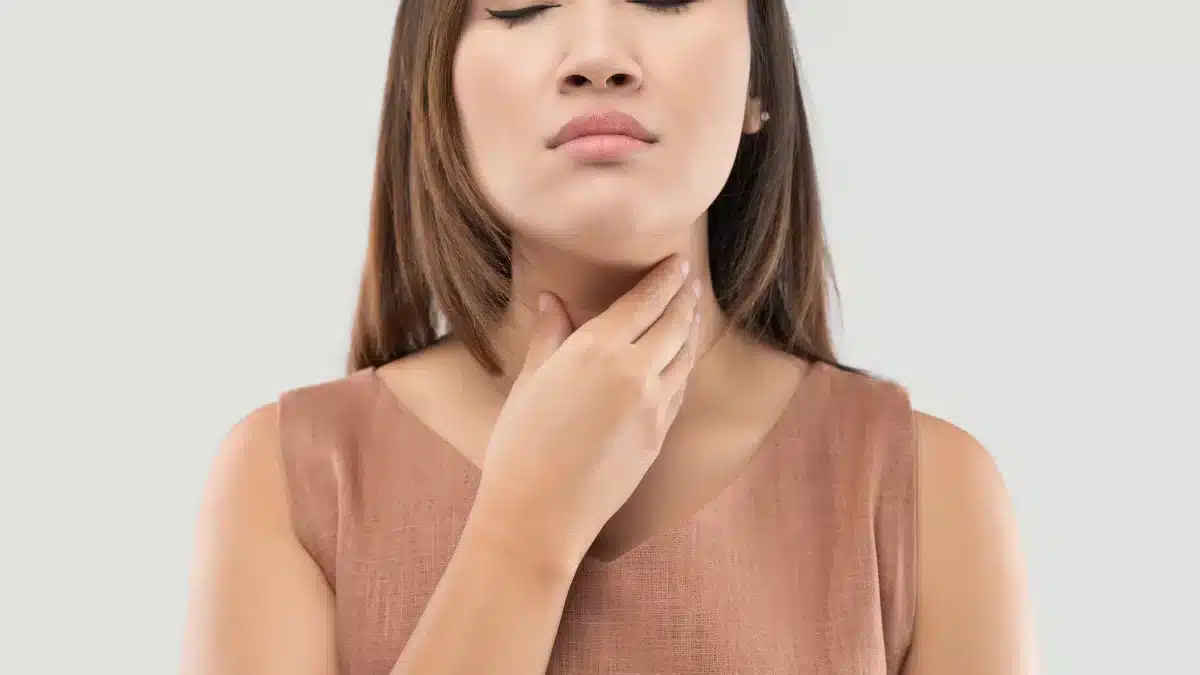Thyroid and Dry Eyes: Understanding the Link and Effective Management
Thyroid, a small gland located in the front of the neck, is important in regulating hormone production in the body.
Thyroid disorders, like Hyperthyroidism and Hypothyroidism, can lead to various symptoms, including Dry eyes.
Eye discomfort and irritation is the common symptoms of Dry eyes.
It occurs when tears evaporate too quickly or are not produced sufficiently.
This article explores the connection between Thyroid and Dry eyes.
It sheds light on the types of thyroid disorders, risk factors, and treatments.
Is there a link between Thyroid and Dry eyes?
Researchers have observed a significant association between Thyroid and Dry eyes, although the exact mechanism is not yet fully understood.
People with Thyroid disorders, such as Graves’ disease (Hyperthyroidism) and Hashimoto’s thyroiditis (Hypothyroidism), are at an increased risk of experiencing dry eye symptoms.
This link may be due to several factors:
Corneal changes
Thyroid diseases can affect the cornea, the clear layer that protects the eye.
This can reduce the sensitivity in the cornea and fewer nerve fibers within it, contributing to dryness.
Tear production
Thyroid diseases can result in reduced tear production and rapid evaporation, both common culprits of Dry eyes.
Eye bulging
In some cases, thyroid disorders can cause the eyes to bulge, leading to a higher likelihood of experiencing dry eye symptoms.
Impact on tear film
People with thyroid disorders may experience alterations in their tear film’s composition and protein profile.
These changes can disturb the balance of the tear film, leading to tear instability, shorter tear break-up time, and ultimately, Dry eyes.
Inflammation
Emerging evidence suggests that immune-mediated inflammation involving T lymphocytes plays a pivotal role in developing dry eye syndrome.
The first signs of Dry eyes in Thyroid

Thyroid Eye Disease, often referred to as TED, can manifest through various eye-related symptoms.
Some of the common signs and symptoms include:
- Eyelid swelling
- Eye pain
- Excessive tearing
- Blurred vision
- Double vision
- Sensitivity to light (photophobia)
Types of Thyroid diseases
There are two primary categories of thyroid disorders, each with its own set of symptoms:
Hyperthyroidism
This condition happens when an excess of thyroid hormone is produced by the thyroid gland.
Symptoms may include heart palpitations, anxiety, weight loss, and Dry eyes.
Graves’ disease commonly causes Hyperthyroidism.
Hypothyroidism
Hypothyroidism is a condition where the thyroid gland does not produce sufficient thyroid hormones.
Symptoms may encompass fatigue, weight gain, dry skin, and Dry eyes. Hashimoto’s thyroiditis can cause of Hypothyroidism.
Diagnosis
Diagnosing dry eye syndrome in individuals with thyroid disorders requires a comprehensive evaluation.
Some common tests and assessments include:
- Ocular Surface Disease Index (OSDI): A questionnaire that helps assess the severity of dry eye symptoms
- Phenol Red Thread (PRT) Test: Measures tear quantity by evaluating wetting of a thread when placed on the eye
- Tear Break-Up Time (TBUT) Test: Determines tear film stability. It does so by measuring the time it takes for dark spots to appear on the pre-corneal tear film after blinking
- Tear Ferning (TF) Test: Evaluates the quality of tears by analyzing tear ferning patterns under a microscope
Treatments for Thyroid and Dry eyes
Dry eyes associated with Thyroid require specific treatment measures. Managing Dry eyes in Thyroid typically involves a multi-pronged approach:
Primary treatment
Making some changes to your environment can help with the Dry eyes:
- Avoid direct airflow or fans
- Use indoor humidifiers to increase moisture levels
- Wear sunglasses outdoors to shield the eyes from wind and dust
- Reduce screen time and take frequent breaks.
Medications
After these changes, secondary treatment includes medications:
- Use lubricating eye drops and ointments to relieve dryness
- Anti-inflammatory medications may be prescribed
- Oral antibiotics might be necessary in some cases
- Nighttime ointment
Protective measures
Dry eyes can be managed by also protecting your eyes:
- Use moisture goggles
- Therapeutic contact lenses may provide relief
- Intense pulsed light therapy and amniotic membrane grafting can be considered for severe cases
WowRx has eye drops to give you relief from these symptoms.
Eyemist E/D 10 ml
Home remedies for managing Thyroid and Dry eyes

In addition to medical treatments, individuals can take steps to alleviate Dry eyes at home:
- Employ an air filter to remove potential eye irritants from the environment
- Wear sunglasses for light sensitivity
- Apply cool compresses to reduce irritation and swelling
- Quitting smoking can alleviate the symptoms
- Exercise regularly to reduce stress
- Nutritional supplements like evening primrose oil and fish oils can support ocular heal
Conclusion
The connection between Thyroid and Dry eyes is well-established, with individuals suffering from Hyperthyroidism and Hypothyroidism being more prone to experiencing dry eyes.
This relationship is attributed to corneal changes, altered tear production, eye bulging, and disruptions in tear film composition.
Thyroid disorders come in various forms, including Hyperthyroidism (linked to Graves’ disease) and Hypothyroidism (associated with Hashimoto’s thyroiditis).
Treatment strategies for Dry eyes encompass environmental adjustments, medications, and protective measures.
Simple changes in the living environment, lubricating eye drops, anti-inflammatory drugs, and protective eyewear can help manage Dry eyes.
However, advanced therapies like intense pulsed light therapy may be considered for severe cases.
By addressing the root causes and adopting personalized treatment plans, individuals can alleviate dry eye symptoms and improve their overall eye health.
Frequently Asked Questions
WowRx uses only high-quality sources while writing our articles. Please read our content information policy to know more about how we keep our content reliable and trustworthy.






